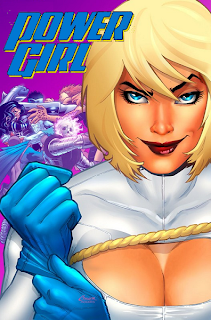
If I wasn't on sabbatical in Springfield, I might've overlooked this completely. Playboy Magazine continues to chart unexplored territory next month, when their November 2009 newsstand issue will feature none other than Springfield's third-most famous citizen, Marge Simpson.
According to one Playboy spokeswoman I heard, Marge's three-page inside spread is, "sexy with implied nudity."
Of course, implied nudity isn't anything new for any member of The Simpsons. Poor Bart became a sex object when he had his junk exposed in 2007's The Simpsons Movie, and any teenage boy with internet access could download enough Simpsons porn to fill a portable hard drive.
In truth, Marge's Playboy debut was inevitable. The Simpsons have enjoyed phenomenal popularity and terrifically wide audience appeal since they burst onto the screen in 1989, and they've pitched almost every product imaginable ever since. I won't say that I saw sex as being next on their list, but I'm not shocked to learn it is.
Magazines, like the monthly comic books I so love, have been hurting for a long time, with annual sales declining at at an average rate of twenty-percent. Whether victims of the internet's timely gratification or of the current recession's effect on discretionary spending, periodicals, as evidenced by last month's cancellation of Gourmet Magazine, grow ever closer to becoming consumerables of a bygone age.
Yet while comics have gone to great lengths to improve the quality of their monthly products, many magazines - from Newsweek to now Playboy -- have seemingly abandoned quality (and dare I say, respectability) for sensationalism.
Granted, sensationalism and short term gain may be reasonable for magazines like Playboy where the long haul may be questionable at best. Still, one would least think that Hugh Hefner and company, by forgoing the long term, might take a better look at the market they do have.
Sales are declining for monthly magazines as well as comics for many reasons, yet chief among them is that both share the same consumer demographic -- namely, white 35-year old males. By forgoing flesh-and-blood females for ladies of the illustrated kind, Playboy's sent Marge Simpson to compete in an arena where she's hopelessly outclassed. No matter how shrewd a decision her centerfold may seem, Springfield's matriarch can't hold a candle to DC Comic's Power Girl or Aspen Entertainment's Executive Assistant Iris. In a tight economy, both comics offer twenty-two pages of glossy monkey-punching material, and for far less money.
Of course, Playboy's betting on Marge to attract new readers -- particularly teenage and twenty-something males -- a vast demographic with with largely disposable income. Marge may deliver Playboy the sales figures its seeking, but only at the cost of what traditionally has kept the magazine afloat.

And frankly, that's sex. Her implied November nudity not-withstanding, Marge has never been a sexy lady, at least not the kind of sexy lady that guys generally drop ten bucks on Playboy to see. For a magazine that once defined what sexy is, the message Playboy's sending the new, younger readers it hopes to attract is a very skewed one indeed.
Sex obviously still sells. But Hugh Hefner and his magazine seem to have lost sight of what's sexy in America today. If anything signals an end to Playboy, it's exactly this.
Is November's Playboy on your shopping list? Or are you going to spend Saturday night at home with a beer and the latest issue of Power Girl? Stop by our Back Issues and let us know!
No comments:
Post a Comment